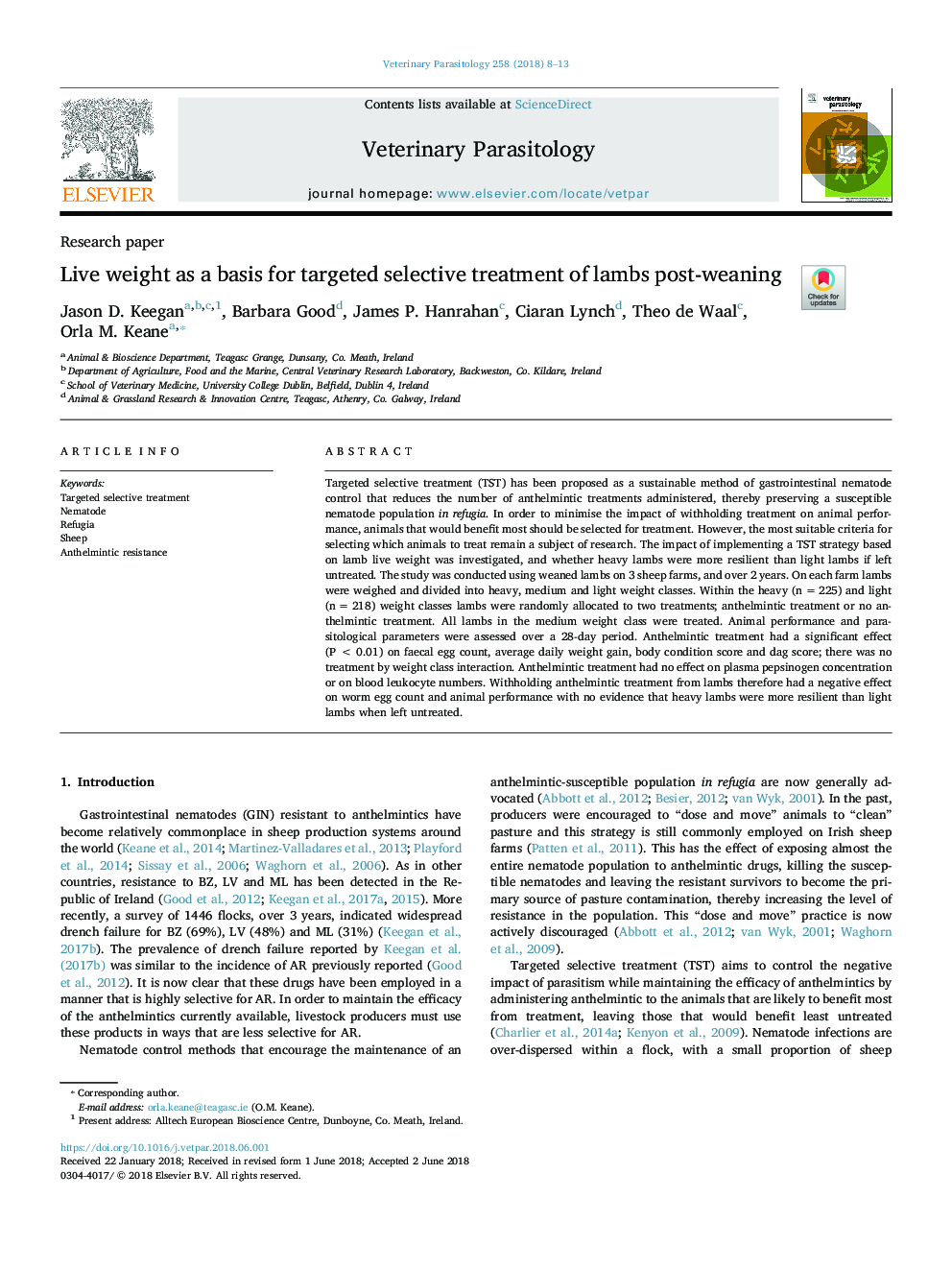| Article ID | Journal | Published Year | Pages | File Type |
|---|---|---|---|---|
| 8505900 | Veterinary Parasitology | 2018 | 6 Pages |
Abstract
Targeted selective treatment (TST) has been proposed as a sustainable method of gastrointestinal nematode control that reduces the number of anthelmintic treatments administered, thereby preserving a susceptible nematode population in refugia. In order to minimise the impact of withholding treatment on animal performance, animals that would benefit most should be selected for treatment. However, the most suitable criteria for selecting which animals to treat remain a subject of research. The impact of implementing a TST strategy based on lamb live weight was investigated, and whether heavy lambs were more resilient than light lambs if left untreated. The study was conducted using weaned lambs on 3 sheep farms, and over 2 years. On each farm lambs were weighed and divided into heavy, medium and light weight classes. Within the heavy (nâ¯=â¯225) and light (nâ¯=â¯218) weight classes lambs were randomly allocated to two treatments; anthelmintic treatment or no anthelmintic treatment. All lambs in the medium weight class were treated. Animal performance and parasitological parameters were assessed over a 28-day period. Anthelmintic treatment had a significant effect (Pâ¯<â¯0.01) on faecal egg count, average daily weight gain, body condition score and dag score; there was no treatment by weight class interaction. Anthelmintic treatment had no effect on plasma pepsinogen concentration or on blood leukocyte numbers. Withholding anthelmintic treatment from lambs therefore had a negative effect on worm egg count and animal performance with no evidence that heavy lambs were more resilient than light lambs when left untreated.
Related Topics
Life Sciences
Agricultural and Biological Sciences
Animal Science and Zoology
Authors
Jason D. Keegan, Barbara Good, James P. Hanrahan, Ciaran Lynch, Theo de Waal, Orla M. Keane,
